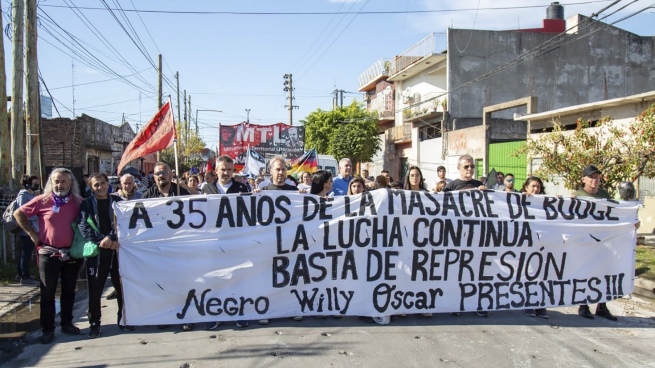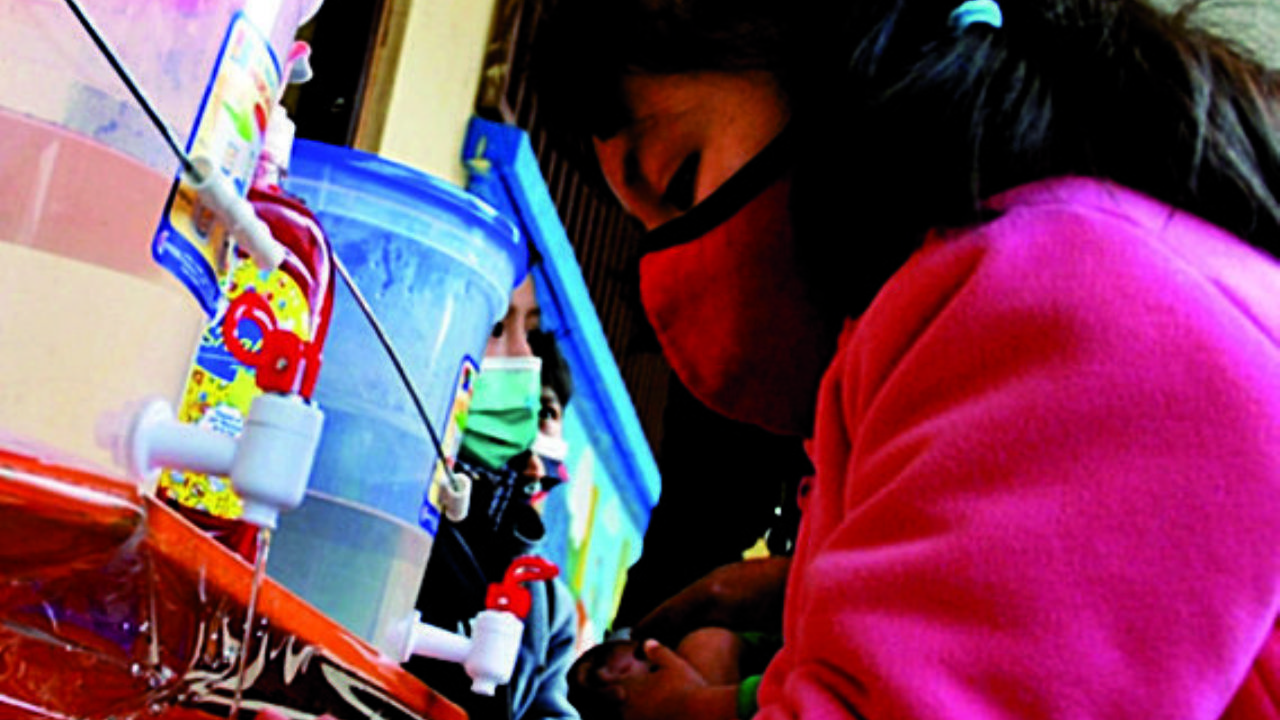Members of Human Rights organizations, officials, family and friends carried out this Sunday a march and an act in memory of the victims 35 years after the “Engineer Budge Massacre”the first case of “easy trigger” since the return of democracy in 1983 that was publicly denounced by civil society and in which Buenos Aires police riddled three young people with bullets.
The commemoration was held within the framework of the “National Day of the Fight Against Institutional Violence”declared in 2013 with the aim of remembering the serious human rights violations committed by the security forces.
In the afternoon of this Sunday, a march was held where a poster was placed by the Secretary of Human Rights of the Nation, in which the place of the events was marked.
“35 years after the Budge Massacre, the fight continues. Enough of repression. Black, Willy, Oscar; present!!”, said the flag, at the head of the mobilization.
Horacio Pietragalla CortiSecretary of Human Rights of the Nation, could not be present due to contracting Covid, but spoke on his behalf Mariano Przybylskidirector of Institutional Violence of the Secretariat.
Przybylski said that the signage poster “is a policy of the Secretariat to make visible the institutional violence that exists, existed and continues to exist.”
“The popular struggle and the organization of the neighbors made it the first time that it was made visible and it was said ‘enough’ and crossed the barrier of fear that paralyzed in those years. In particular, I believe in this signage, in addition to the murdered kids, the popular struggle was honored,” said the official.
“Signage to 35 years of the Engineer Budge Massacre”, indicated the poster spread by official social networks and signed by different areas of the National Government and the Province of Buenos Aires, the Municipality of Lomas de Zamora and the Commission of Friends and Neighbors (CAV).
A mural with the faces of the three murdered youths, made by the CAV, was also inaugurated.
In addition to national, provincial and municipal officials, relatives of other victims of institutional violence participated in the act, such as the case of Rosa Schonfeld, mother of Miguel Bru, the young journalism student who disappeared in August 1993 in La Plata.
How did it happen
On May 8, 1987, around 7:00 p.m., Oscar Aredes (19), Roberto “Willy” Argañaraz (24) and Agustín Olivera (26) were talking and drinking beer at the corner of Guaminí and Figueredo, in Ingeniero Budge, when they were shot to death by three Buenos Aires police officers.
Supposedly, Olivera and Argañaraz had had a minor inconvenience with the owner of the pantry where they bought the beer, so the troops would have gone to the place alerted by the woman’s complaint.
As a result of what happened, they accused the senior non-commissioned officer Juan Ramón Balmaceda, first Corporal Juan Alberto Miño and Corporal Isidro Rito Romero, who argued that it had been a confrontation and that the victims were armed.
Meanwhile, forensic doctors determined that Olivera had 12 gunshot wounds and Aredes had 7, mostly to the back in both cases, while Argañaraz had at least 3 head shots from close range.
Faced with this situation, the neighborhood where the young people lived immediately mobilized in the streets demanding justice and against police repression, a type of protest unusual in those first years of the return of Democracy and which, in turn, was framed in an environment still convulsed by the “carapintada” military uprising of Holy Week in 1987, which from Campo de Mayo kept the entire country on edge.
In May 1990, a first oral trial was held in which Balmaceda and Miño were sentenced to 5 years in prison for “murder in a fight”, and Romero to 12 for “simple homicide”.
But that ruling was later annulled by the provincial Supreme Court of Justice, which considered proven that evidence had been tampered with and ordered a new trial, which was held in June 1994.
In that second debate, the three police officers were sentenced to 11 years in prison for simple homicide, but they were not arrested until the ruling was final.
This confirmation of the sentence occurred in 1998, when the arrest of the three convicted was ordered, but they escaped before being captured.
It was only in 1999 that Romero was captured and, finally, in 2006 Miño and Balmaceda were captured; and thus they began to purge effectively with their sentence, which was already considered fulfilled.
Within the framework of the National Day for the Fight against Institutional Violence and in homage to Agustín Olivera, Oscar Aredes and Roberto Argañaraz assassinated 35 years ago by non-commissioned officers of the Buenos Aires police, we inaugurate a signaling poster together with their relatives. pic.twitter.com/Qk6haB3oBr
— Human Rights Secretariat (@SDHArgentina) May 8, 2022












